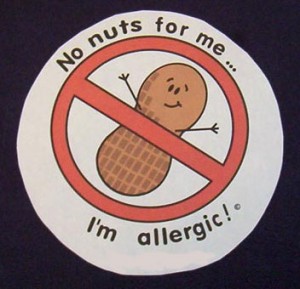I recently attended a children’s holiday party that ended with a group of parents discussing the treats they brought to share. One parent lamented that she could not bring her family’s favorite cookies (which contain peanut butter) for fear a child at the party was allergic to peanuts. The discussion eventually arrived at the question, are more children really suffering from allergies to food items like peanuts, dairy products and wheat?
Everyone at the party had an opinion, but no one quite knew the answer for sure. Of course, I hurried home to do some research.
I wasn’t able to find a clear conclusion because the evidence on food allergies is limited. Two separate, large systematic reviews published in The Journal of Allergy and Clinical Immunology and the Journal of the American Medical Association found inconclusive evidence about the prevalence of food allergies, mainly because there is not uniform criteria available for diagnosing and tracking food allergies.
The review in The Journal of Allergy and Clinical Immunology included 36 studies and a total of more than 250,000 children and adults. Only 6 studies included food challenge tests – the gold standard for allergy testing that involves serving a patient a suspected allergen unknowingly. More importantly, the analysis found very little uniformity in study methods, making difficult to compile data.
The review in the Journal of the American Medical Association came to the same conclusion – without a uniform method for studying food allergies, it’s difficult to draw conclusions about what’s going on. This review concluded that food allergy affects more than 1 percent of the population but less than 10 percent and found it unclear if the prevalence of food allergies is increasing. The analysis also found that a common diagnostic process for food allergies c alled the elimination diet – where patients eliminate suspected allergens from their meals – have rarely been studied.
alled the elimination diet – where patients eliminate suspected allergens from their meals – have rarely been studied.
So, the jury is still out. But the good news is that the federal government has recognized the critical need for more research in this area and provided a steady stream of funding to the National Institute of Allergy and Infectious Disease to address these questions. Their first step was to commission a review of the scientific and clinical literature that would eventually lead to the development of guidelines for diagnosing and managing food allergies. (You can read it here.)
In the meantime, my son’s school will remain peanut-free. And I agree, it’s probably better that way. If there are students who is seriously allergic to peanuts, it’s important to keep them safe. We’ll just have to make our own peanut butter cookies to enjoy at home.



I used to be afraid of allergies, they make my sons feel bad and break the happy environment of the party. Imagine we are enjoying a party, then suddenly a boy becomes faint and fell-off his seat. People gather around and take him to the hospital. No one wants to continue the party. What a depressed situation!
To prevent that, I think that we should keep away from questionable food and bring safe ones only to ensure that no one will get food allergy.